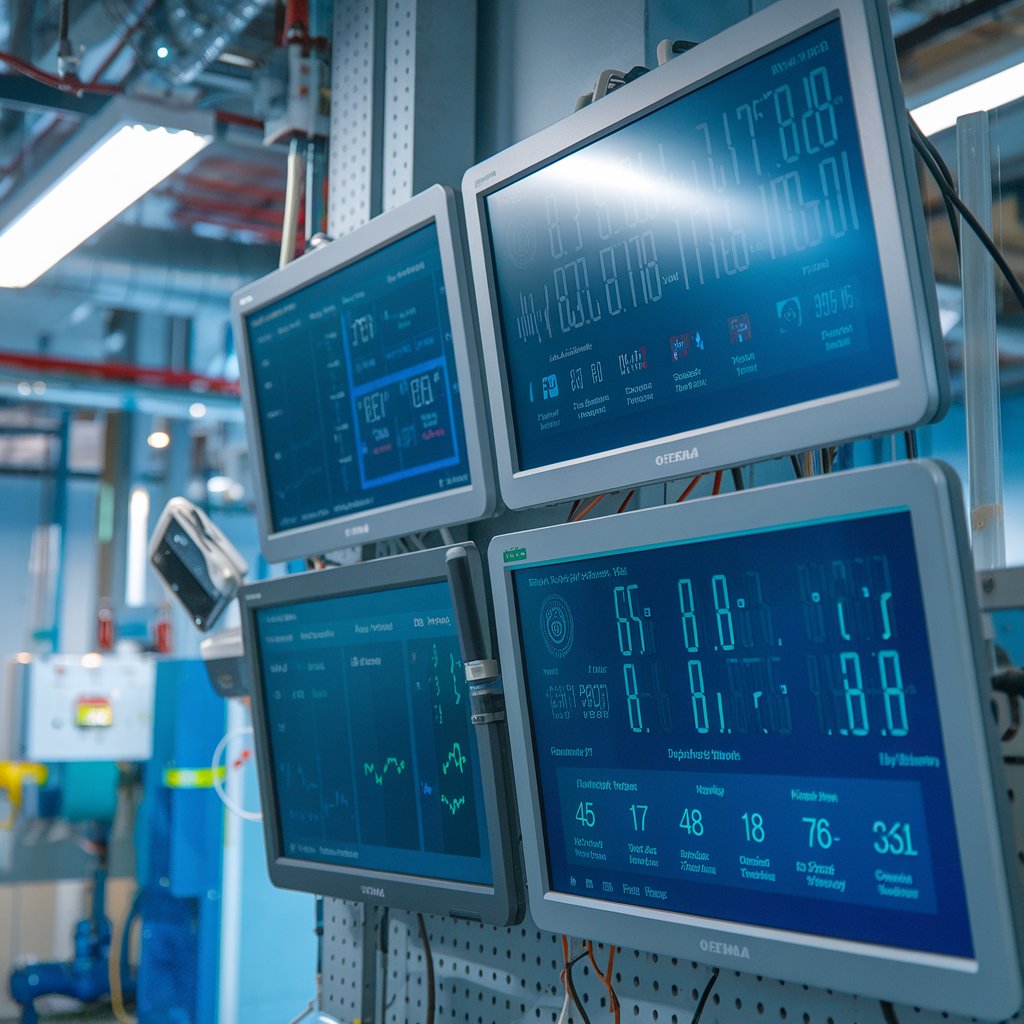The Industrial Internet of Things (IIoT) is rapidly reshaping the industrial landscape by integrating smart technology with traditional manufacturing processes. Central to this transformation is the evolution of industrial IoT displays, which play a pivotal role in enhancing operational efficiency, real-time data visualization, and decision-making. As industries continue to embrace digitalization, understanding the strategic trends and future outlook for the industrial IoT display market becomes crucial for stakeholders aiming to stay ahead of the curve.
Strategic Trends in the Industrial IoT Display Market
- Integration with Advanced Analytics
One of the most significant trends in the industrial IoT display market is the integration of advanced analytics. Modern industrial displays are increasingly equipped with capabilities to process and analyze data in real time. This integration allows for more sophisticated visualization of key performance indicators (KPIs) and operational metrics, enabling quicker and more informed decision-making. Displays equipped with edge computing and artificial intelligence (AI) can now provide predictive analytics, anomaly detection, and insights that were previously unattainable.
- Enhanced Connectivity and Interoperability
As industries adopt more diverse IoT devices and systems, the need for enhanced connectivity and interoperability among these devices is growing. Industrial IoT displays are now being designed with support for various communication protocols, including MQTT, OPC UA, and REST APIs. This trend ensures seamless integration with a wide range of industrial equipment and systems, facilitating unified data management and control across different platforms.
- Focus on User Experience and Ergonomics
User experience (UX) and ergonomics are becoming critical factors in the design of industrial IoT displays. Modern displays are focusing on providing intuitive interfaces, customizable dashboards, and user-friendly controls. Advances in touch screen technology, voice commands, and gesture recognition are enhancing interaction and usability. Additionally, displays are being designed to withstand harsh industrial environments, with features such as anti-glare screens, rugged housings, and high visibility under various lighting conditions.
- Adoption of Augmented Reality (AR) and Virtual Reality (VR)
The incorporation of Augmented Reality (AR) and Virtual Reality (VR) technologies into industrial IoT displays is gaining traction. AR and VR are being used to overlay digital information onto physical environments, providing immersive visualization and interaction experiences. For instance, AR can assist technicians by displaying real-time data and instructions directly onto machinery, while VR can simulate complex scenarios for training and maintenance purposes. This trend is enhancing operational efficiency, training effectiveness, and overall safety.
- Increased Focus on Cybersecurity
With the growing integration of IoT devices, cybersecurity has become a top priority. Industrial IoT displays are now incorporating advanced security features to protect against cyber threats. This includes encryption, secure access controls, and regular software updates. Ensuring the integrity and confidentiality of data transmitted and displayed is crucial for maintaining operational security and preventing unauthorized access or tampering.
Industrial IoT Display Market Growth :
The global Industrial IoT Display market size is estimated to be USD 0.9 billion in 2023 and is projected to reach 1.6 billion by 2028, at a CAGR of 13.3% during the forecast period. The growing adoption of Industry 4.0 and the increasing demand of HMI devices play a key role in driving the growth of Industrial IoT Display market in near future.
Download PDF Brochure @
https://www.marketsandmarkets.com/pdfdownloadNew.asp?id=245560788

Future Outlook for the Industrial IoT Display Market
Growth in Market Demand
The industrial IoT display market is expected to experience robust growth over the next several years. Driven by the increasing adoption of IoT technologies across various industries, such as manufacturing, logistics, and energy, the demand for advanced display solutions will continue to rise. The growing need for real-time data visualization, improved operational efficiency, and enhanced decision-making capabilities will fuel this market expansion.
Technological Advancements
Future advancements in display technology will likely focus on enhancing resolution, brightness, and color accuracy. Emerging technologies, such as OLED and MicroLED, are expected to provide superior image quality and energy efficiency compared to traditional LCD displays. Additionally, developments in display size and form factors will cater to diverse industrial applications, from large-scale control rooms to compact machinery panels.
Expansion of Use Cases
As industrial IoT technologies continue to evolve, the use cases for IoT displays will expand. Beyond traditional monitoring and control, displays will play a crucial role in supporting predictive maintenance, remote diagnostics, and supply chain optimization. The integration of IoT displays with other smart technologies, such as digital twins and automation systems, will further enhance their functionality and applications.
Increased Customization and Flexibility
Customization and flexibility will become key trends in the future of industrial IoT displays. Manufacturers will offer a wider range of display options, including modular designs and customizable features, to meet the specific needs of different industries and applications. This trend will enable businesses to tailor display solutions to their unique requirements, improving overall effectiveness and user satisfaction.
Sustainability and Energy Efficiency
Sustainability and energy efficiency will become increasingly important considerations in the industrial IoT display market. As industries focus on reducing their environmental impact, there will be a growing demand for energy-efficient displays that consume less power and have a lower carbon footprint. Manufacturers will invest in developing eco-friendly technologies and materials to meet these sustainability goals.
The industrial IoT display market is on the cusp of significant transformation, driven by technological advancements, evolving user needs, and the growing adoption of IoT technologies. Key trends such as the integration with advanced analytics, enhanced connectivity, and the incorporation of AR/VR are shaping the future of industrial displays. As the market continues to grow, stakeholders must stay informed about emerging trends and technological developments to leverage the full potential of industrial IoT displays. Embracing these changes will enable businesses to optimize operations, improve decision-making, and maintain a competitive edge in the rapidly evolving industrial landscape.
